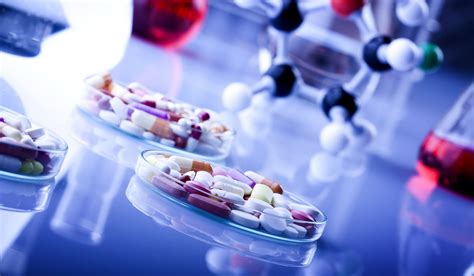Medicinal drugs play a crucial role in maintaining and improving human health, but have you ever wondered about the chemistry behind these life-saving treatments? In this blog post, we will delve into the fascinating world of medicinal drug development and research, exploring the intricate role of chemical compounds in the creation and effectiveness of these medications. From the process of drug development to the significance of drug interactions and the biochemical pathways of drug action, we will unravel the complexities of this field. We will also investigate the importance of drug formulation and delivery, the structure-activity relationship in drug design, and the pharmacokinetics of medicinal drugs. Additionally, we will analyze drug safety and toxicity studies and consider the future of medicinal drug development. Join us on this journey as we uncover the science behind the medications that have the power to save lives and improve the well-being of individuals worldwide.
Table of Contents
Understanding the Chemistry of Medicinal Drugs
Medicinal drugs are a crucial part of modern healthcare, playing a vital role in the treatment and management of various medical conditions. The chemistry of medicinal drugs refers to the study of the chemical processes and interactions involved in drug development, formulation, and delivery. Understanding the chemistry of medicinal drugs is essential for pharmacists, healthcare professionals, and researchers to ensure the safety and efficacy of these medications.
Chemical compounds form the basis of medicinal drugs, and their precise composition and structure determine the drug’s therapeutic effects and potential side effects. Pharmacokinetics, the study of how drugs are absorbed, distributed, metabolized, and eliminated by the body, is a significant aspect of drug chemistry. It helps in understanding how the chemical compounds in drugs interact with the body and how they are processed over time.
The pharmacological activity of drugs is closely tied to their chemical structure, known as the structure-activity relationship. This relationship is a fundamental concept in drug design and development, as it allows researchers to optimize the therapeutic effects of drugs while minimizing any adverse reactions. The biochemical pathways of drug action further elucidate how drugs interact with specific targets in the body, providing insights into their mechanisms of action and potential for therapeutic benefit.
Overall, a comprehensive understanding of the chemistry of medicinal drugs is indispensable for advancing drug research, ensuring drug safety, and optimizing drug therapy for patients. Through ongoing study and analysis of drug interactions, safety, and toxicity, researchers and healthcare professionals can continue to improve the effectiveness and safety of medicinal drugs, ultimately benefiting patient care and public health.
Exploring the Process of Drug Development
Drug development is a complex and multi-step process that involves the discovery, design, synthesis, and testing of new medications for therapeutic use. It begins with the identification of a target disease or condition, followed by the exploration of potential drug candidates that could effectively treat or manage the health issue.
Once potential drug candidates are identified, they undergo rigorous preclinical studies to evaluate their safety and efficacy. This stage involves in vitro and in vivo experiments to assess the pharmacokinetics, pharmacodynamics, and toxicological profiles of the compounds.
After successful completion of preclinical studies, the drug development process progresses to clinical trials, which are conducted in multiple phases to test the safety and efficacy of the drug in human subjects. These trials are carefully designed and closely monitored to ensure the well-being of the participants and the reliability of the data.
Finally, if the drug successfully demonstrates safety and efficacy in clinical trials, the pharmaceutical company submits a New Drug Application (NDA) to the regulatory authorities for approval. Upon approval, the drug is launched into the market and post-marketing surveillance is conducted to monitor its safety and effectiveness in real-world settings.
Unraveling the Role of Chemical Compounds in Drug Research
Chemical compounds play a crucial role in the field of drug research, influencing the development and effectiveness of medicinal drugs. The study of these compounds involves the exploration of their molecular structures, reactivity, and interactions with biological systems.
Researchers involved in drug research are tasked with understanding how different chemical compounds can be synthesized, modified, and utilized to create drugs that target specific diseases and conditions. This process involves the investigation of various chemical properties and the identification of potential drug candidates.
Furthermore, the role of chemical compounds in drug research extends to the study of their pharmacokinetics and pharmacodynamics, which are essential in determining the absorption, distribution, metabolism, and excretion of drugs in the body, as well as their mechanisms of action.
Ultimately, the unraveling of the role of chemical compounds in drug research contributes to the advancement of pharmaceutical science and the development of innovative therapeutic interventions for diverse medical needs.
Analyzing the Significance of Drug Interactions
Drug interactions occur when one drug affects the activity of another drug when they are administered together. These interactions can result in either enhancing or diminishing the therapeutic effects of the drugs, as well as causing adverse effects or toxicity. Understanding the significance of drug interactions is crucial in ensuring the safety and efficacy of medication regimens.
It is important to recognize that drug interactions can occur due to a variety of mechanisms, such as changes in drug metabolism, alterations in drug transport, or interactions at the receptor level. Furthermore, certain foods, supplements, and herbal products can also interact with drugs, leading to potential complications.
Healthcare professionals must be vigilant in assessing potential drug interactions when prescribing medications to patients. This involves considering a patient’s complete medication history, including over-the-counter drugs and supplements. Pharmacists play a key role in identifying and preventing potential interactions by providing comprehensive medication reviews.
In conclusion, the significance of drug interactions cannot be overstated, as they have the potential to significantly impact the safety and effectiveness of drug therapy. It is imperative for healthcare providers and patients to be informed about potential interactions and take proactive measures to minimize the risks associated with drug interactions.
Unveiling the Pharmacokinetics of Medicinal Drugs
Pharmacokinetics is the study of how a drug is absorbed, distributed, metabolized, and excreted by the body. This process determines the concentration of a drug at various sites in the body over a period of time. Understanding the pharmacokinetics of medicinal drugs is crucial for determining the appropriate dosage, frequency of administration, and potential drug interactions.
Pharmacokinetics also plays a vital role in predicting the effectiveness and safety of a drug in different patient populations, such as the elderly, children, and individuals with underlying health conditions. By uncovering how drugs move through the body and are transformed by different metabolic processes, researchers can better tailor treatments to individual patients and minimize the risk of adverse effects.
Furthermore, pharmacokinetic studies provide valuable insights into the variability of drug responses within a population, which can guide the development of personalized medicine approaches. By analyzing the absorption, distribution, metabolism, and excretion of drugs in diverse patient groups, researchers can identify genetic, environmental, and physiological factors that influence drug behavior and effectiveness.
Overall, the pharmacokinetics of medicinal drugs forms a critical foundation for optimizing drug therapy, improving patient outcomes, and advancing the field of precision medicine. This essential knowledge enables healthcare professionals to make informed decisions about drug dosing, administration routes, and treatment regimens, ultimately enhancing the quality and safety of patient care.
Examining the Importance of Drug Formulation and Delivery
Drug formulation and delivery are crucial aspects of the pharmaceutical industry, playing a significant role in the efficacy and safety of medicinal drugs. The formulation of a drug refers to the process of creating a dosage form that is suitable for administration to patients. This involves selecting the appropriate excipients, determining the drug release profile, and ensuring stability and bioavailability.
On the other hand, drug delivery focuses on the method of administering the formulated drug to the target site within the body. This includes considerations such as the route of administration, drug absorption, distribution, metabolism, and elimination. Both formulation and delivery directly impact the therapeutic outcomes of medications and patient adherence to treatment regimens.
Furthermore, advancements in drug formulation and delivery technologies have revolutionized the field of pharmacology. Scientists and researchers are constantly seeking innovative approaches to enhance drug efficacy, reduce side effects, and improve patient compliance. This includes the development of novel drug delivery systems, such as nanoparticle carriers, microneedles, and implantable devices, as well as the use of advanced formulation techniques like encapsulation and controlled release.
Ultimately, the importance of drug formulation and delivery cannot be understated in the development of safe and effective pharmaceutical products. By understanding the complex interplay between formulation, delivery, and therapeutic response, pharmaceutical scientists can continue to improve the quality and accessibility of medications for the benefit of patients worldwide.
Investigating the Structure-Activity Relationship in Drug Design
When it comes to designing effective and safe medicinal drugs, one of the crucial aspects that researchers need to consider is the structure-activity relationship. This relationship refers to the connection between the chemical structure of a drug and its pharmacological activity. In other words, it explores how the arrangement of atoms and functional groups in a drug molecule influences its biological effects within the body.
By investigating the structure-activity relationship, scientists are able to gain insights into how certain chemical modifications can enhance or diminish the drug’s efficacy and safety. This knowledge is particularly important in the process of drug design and development, as it allows researchers to optimize the therapeutic properties of a drug while minimizing potential adverse effects.
Through advanced technologies such as computer-aided drug design and molecular modeling, scientists are able to analyze and predict the interactions between a drug molecule and its biological target. This enables them to make informed decisions about modifying the chemical structure of a drug in order to achieve the desired pharmacological activity.
Overall, the investigation of the structure-activity relationship plays a pivotal role in the rational design of medicinal drugs, ultimately leading to the development of more effective and safer treatment options for various health conditions.
Delving into the Biochemical Pathways of Drug Action
When it comes to understanding how drugs work in the body, delving into the biochemical pathways of drug action is essential. Biochemical pathways are the series of chemical reactions that occur within the body, and they play a crucial role in determining the effects of drugs on the body.
One of the key aspects of delving into the biochemical pathways of drug action is understanding how drugs interact with specific enzymes and receptors in the body. Many drugs work by binding to these proteins and altering their activity, leading to the desired therapeutic effects.
Furthermore, exploring the biochemical pathways of drug action can also provide insights into potential side effects and toxicity of drugs. Understanding how a drug interacts with various biochemical pathways can help researchers predict and mitigate potential adverse effects.
Overall, delving into the biochemical pathways of drug action is crucial for gaining a comprehensive understanding of how drugs exert their effects on the body, as well as for informing drug development and improving drug safety.
Evaluating Drug Safety and Toxicity Studies
When it comes to evaluating drug safety and toxicity studies, there are a number of factors that must be taken into consideration. Firstly, it’s important to consider the potential adverse effects that a drug may have on the human body. This involves conducting extensive research and clinical trials to determine whether a drug is safe for use and what potential side effects it may have.
Another crucial aspect of evaluating drug safety and toxicity studies is understanding the long-term effects of a medication. It’s essential to look at how a drug may interact with other medications, as well as how it may impact certain populations, such as pregnant women or elderly individuals.
Furthermore, the safety of a drug involves considering its toxicity and potential for abuse. This means assessing the risk of addiction, as well as the potential for overdose or misuse. It’s also important to consider the environmental impact of a drug, such as its potential to harm wildlife or contaminate water supplies.
Overall, evaluating drug safety and toxicity studies is a complex and thorough process that requires collaboration between researchers, clinicians, and regulatory agencies. It’s essential for ensuring the safety and well-being of patients, as well as the environment.
Considering the Future of Medicinal Drug Development
In medicine, the development of new medicinal drugs is a constantly evolving process. As technology advances and our understanding of biochemistry deepens, the future of medicinal drug development holds great promise. With the ability to explore and manipulate chemical compounds at a molecular level, scientists and researchers are now able to design and develop drugs with greater precision and efficacy than ever before.
The future of medicinal drug development also involves consideration of drug interactions and pharmacokinetics. By analyzing these essential aspects of drug development, researchers can optimize the efficacy and safety of medicinal drugs. This focus on efficiency and safety is a key element in the future of medicinal drug development.
Additionally, the future of medicinal drug development will explore innovative formulation and delivery methods to improve patient compliance and outcomes. From long-acting injectables to novel oral formulations, the future holds a promise of revolutionizing the way medicinal drugs are administered and managed in clinical settings.
With exciting advancements in science and technology, the future of medicinal drug development is indeed promising. As researchers continue to push the boundaries of innovation and discovery, the potential for improving healthcare and patient outcomes through medicinal drugs is limitless.





